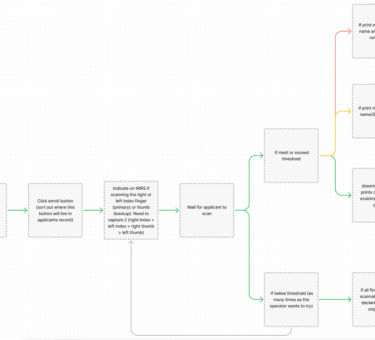Accessibility. Ac-ces-i-bil-it-y.
What does it mean to make your website or phone app “accessible”?
Let’s start with a parallel experience. Hi there, my name is Amy Johnson and I am a late-diagnosed Autistic woman. I am also a Product Designer at Tandem. I live, breathe and work in a world that wasn’t made for me. I walk into offices that are wide open, with bright lighting and loud footsteps. I’ve endured harsh, standardized evaluation processes (at previous companies) and have had extreme difficulty presenting my work. I’ve even had to take medical leave because in periods of my life, eight-hour work days were too intense for my sensitivities.
I’ve learned to cope: I’ve learned to use noise-cancelling headphones, wellness rooms, and mindfulness practices. I’ve learned to “mask” so people are comfortable around me. I’ve learned to manage myself in ways that go with the flow.
I, like every disabled person in the world, see things through a different lens and have to adjust. A wheelchair user might not be able to take a new job because of lack of elevator or ramp. A person with a history of migraines might not be able to come into the office in person some days when they are hurting.
Just like physical spaces, web experiences can be accessible or inaccessible. Apps could lack proper tabbing between elements and blind people won’t be able to navigate them properly. A light-intense video might cause someone with epilepsy to seize. Your grandfather might not be able to read a health alert from his doctor if the text is locked at a small size, if he has low vision.
The good news? With an intentional approach, we can design for accessibility and remove those barriers. A properly accessible website or app greatly improves the experience of those with visual disabilities like blindness, low vision, and dyslexia.
Making Accessibility Intuitive
Creating an accessible web experience is a great duty and responsibility for designers, developers, and content creators. However it is too often overlooked as a last-minute, half-baked part of the process. In reality, your accessibility should have the same intuitive flow as your visual user experience so no person is left out. The vast majority of those doing design and dev work are able-bodied individuals (this goes also for those office-centric experiences I mentioned above) — so how can product teams make this shift to a process that integrates accessibility throughout?
I believe in these three key methods to making accessibility a natural part of your process:
- Create best practices checklists based on WCAG standards. Not only one checklist, but multiple. Every product is different and won’t necessarily need to include every item. Make the lists manageable and modular so that people are inclined to really use them.
- Build accessibility standards, both general and specific, into your brand guidelines. Make it known to your company as well as clients that these standards are mandatory. Make an announcement and keep each other accountable. If you are an agency, weave it into your SOWs and use your checklists as a method of education to your clients.
- Bring in disabled people for your accessibility studies. Find the areas of your project that might be most heavily hit by accessibility concerns and see what happens when a disabled person interacts with them. This is the absolute best way to make your product as intuitive as possible and to find any holes in your accessibility.
Currently (as of April 13, 2021), WCAG standards are in version 2.1. 2.2 is in a public draft form. Visit the W3 website for more detailed information.
The Disabled List is an organization that reaches out to disabled websites to help fix them: https://www.disabledlist.org/.
Often, as designers and developers, we have biases when it comes to our products. We’re distracted by things like project scope, design pride, budgets, and timelines. We forget about some of the most important and core concepts of our products: the human interaction. Using a combination of standard best practices and real reactions by real humans, your product will be on its way to being best in class. Remember to think with empathy and educate with confidence.









